Ulysses S. Grant’s Tomb- Guide to General Grant National Memorial
Purchases made through links earn us a small commission, at no extra cost to you.
Standing in a park beside the Hudson River in New York City, Grant’s Tomb- officially known as the General Grant National Memorial- is the grand burial place of Ulysses S. Grant, former president and one of America’s greatest military leaders. As the largest mausoleum in North America, this iconic structure is more than just a burial site; it is a tribute to Grant’s life, achievements, and legacy.
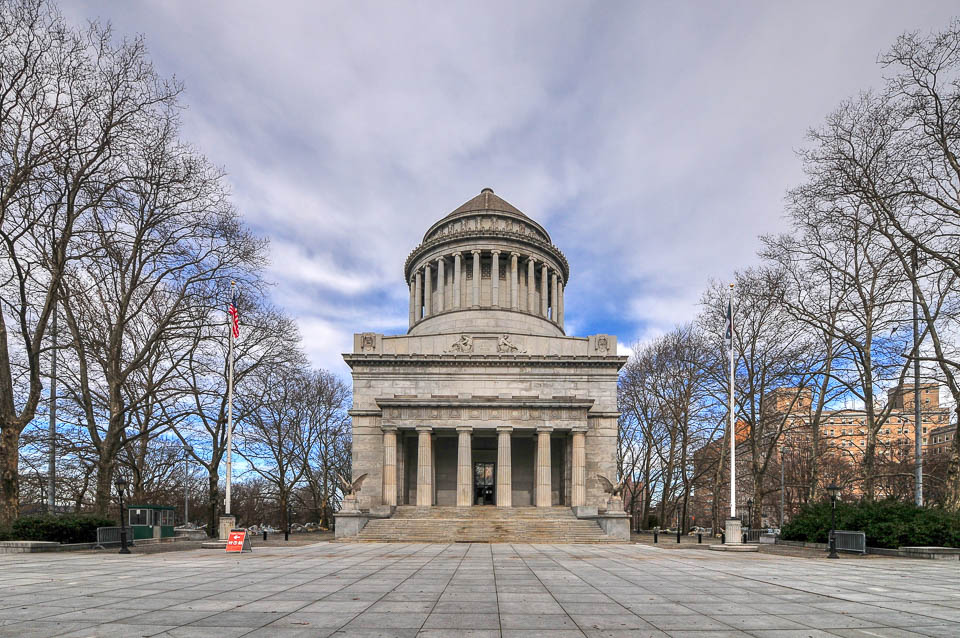
Before we share some information about Grant’s Tomb and what to expect when visiting it, here’s a brief background about Ulysses S. Grant and why he was so important.
In This Post
Who Was Ulysses S. Grant
Ulysses S. Grant was the 18th president of the United States and a general of the Union Army during the American Civil War.
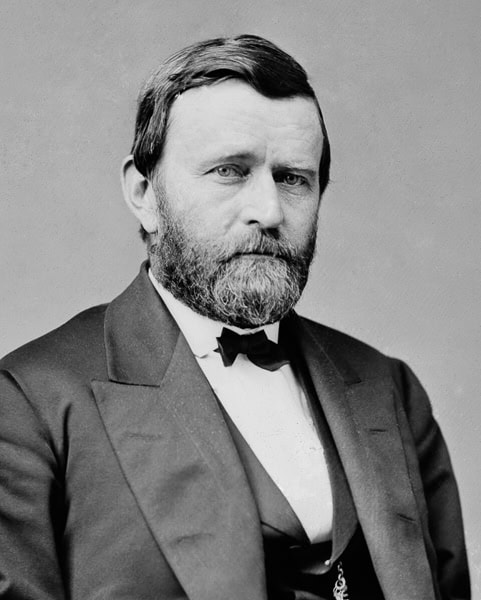
Grant’s successful military career began after graduating from the United States Military Academy. He served as a lieutenant in the Mexican-American War then rose to prominence after coming out of retirement to join the Union Army in 1861, shortly after the Civil War began. Under Grant, Union forces achieved crucial victories at Vicksburg, Chattanooga, and then Appomattox which resulted in the surrender of the Confederate Army. In 1866 he was appointed to the newly created rank of General of the Army, the highest rank in the U.S. Army.
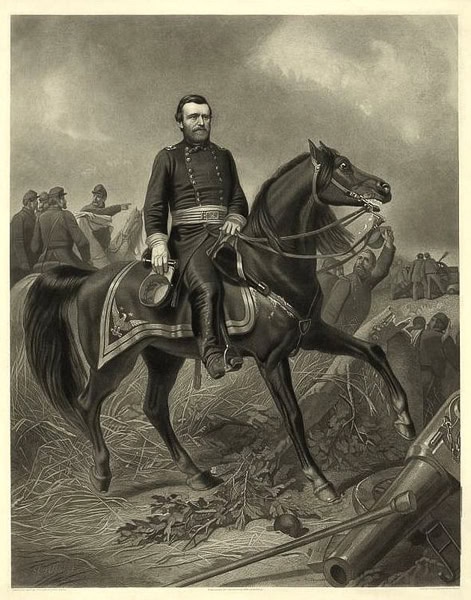
After the war, Grant was elected president in 1868 and held office for two terms until 1877. During his presidency, the Union was restored and the Fifteenth Amendment was ratified prohibiting governments from disenfranchising African Americans. Grant also signed legislation establishing Yellowstone National Park, the country’s first national park.
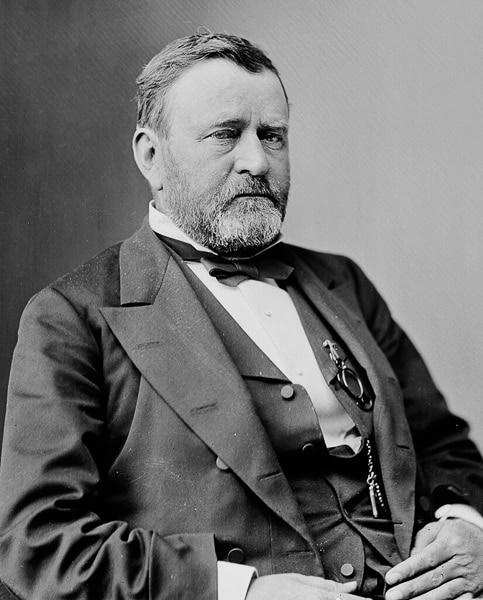
After leaving office, Grant travelled the world and later wrote the highly acclaimed Personal Memoirs of U.S. Grant. He died of throat cancer in 1885 at age 63 and was laid to rest in a tomb in New York City’s Riverside Park.
History of Grant’s Tomb
Following Grant’s New York City funeral, his body was interred in a temporary tomb in Riverside Park until a permanent mausoleum was built. The Grant Monument Association (GMA) was established to raise funds for the project, receiving $100,000 in donations during the first three months.
The GMA held two architectural competitions and a proposal by John Hemenway Duncan, modelled after the Mausoleum at Halicarnassus, was selected as the winning concept for Grant’s Tomb. The mausoleum, according to Duncan, would be a “monumental structure that should be unmistakably a tomb of military character”.

Construction of General Grant’s tomb began in 1891 on the site of his temporary resting place. After several delays, the monument was completed in 1897. On April 17, 1897, Grant’s remains were transferred to a sarcophagus and placed in the mausoleum. A dedication ceremony was held on April 27, 1897, on what would have been Grant’s 75th birthday. An estimated one million spectators attended the ceremony.
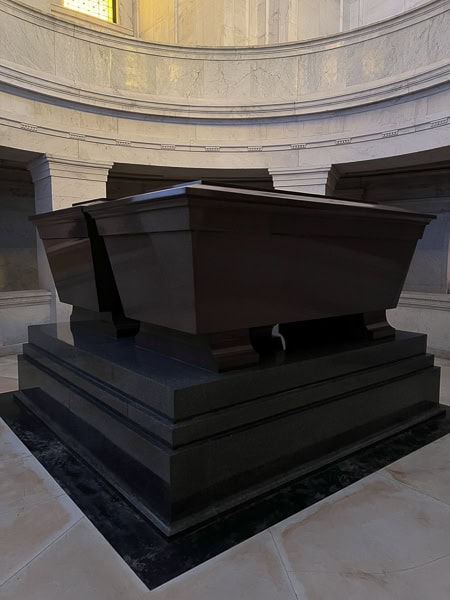
Throughout the years, several modifications and renovations were made to the mausoleum including the installation of stained glass windows, new marble flooring, and a pair of eagle statues on the exterior staircase.
In 1956, the state governor signed a bill transferring the monument’s land to the federal government. In 1958, a bill was signed by President Eisenhower transferring responsibility for the tomb’s operation to the United States Department of the Interior. The National Park Service took over the operations of Grant’s Tomb on May 1, 1959, and it was officially renamed the General Grant National Memorial.
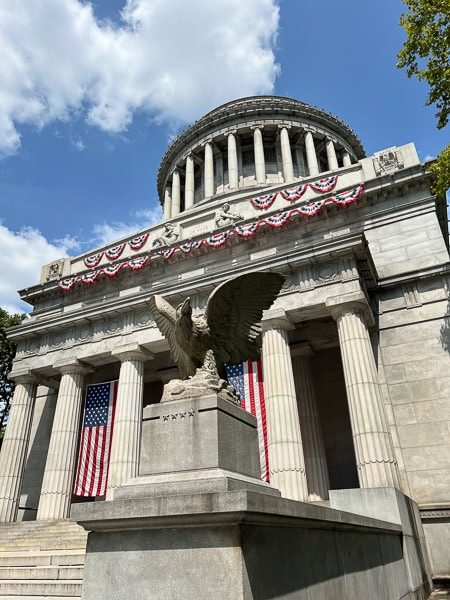
Grant’s Tomb was added to the National Register of Historic Places in 1966. It is also designated a New York City Landmark and was added to the New York State Register of Historic Places in 1980.
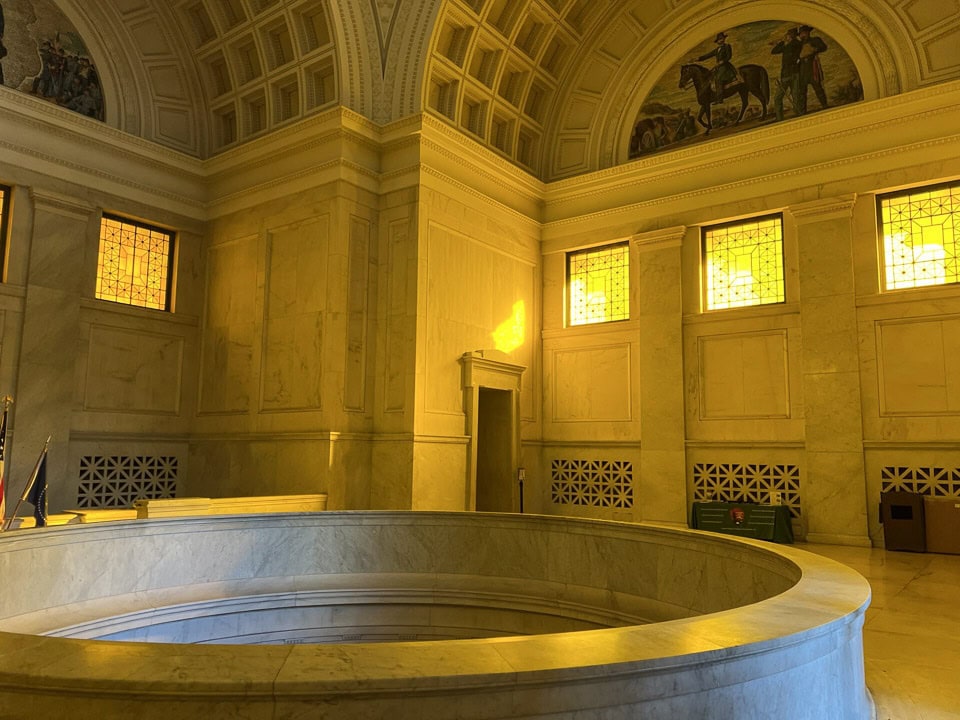
Design of Grant’s Tomb
The General Grant National Memorial was designed in a Neoclassical style inspired by ancient Greek and Roman structures.
The exterior of the granite monument has two distinct forms- a rectangular base and an upper level with a cylindrical drum and stepped cone. Colonnades are the defining feature of both levels.
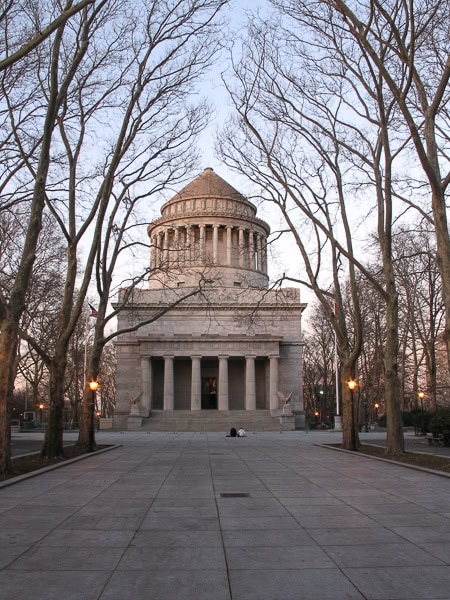
The front of the mausoleum has two eagle statues framing a wide staircase leading up to a hexastyle portico. The portico is supported by two rows of fluted Doric columns- six in the front and four in the back. Above the columns is an entablature with laurel wreaths and plain circular bosses. The portico’s cornice has stone blocks above each column that were intended to have equestrian statues of Union generals placed on them. Above the portico is a plaque with Grant’s presidential campaign slogan “Let Us Have Peace”. On either side of the plaque are two female allegorical figures representing victory and peace. The top corners of the facade are embellished with heraldic eagles.
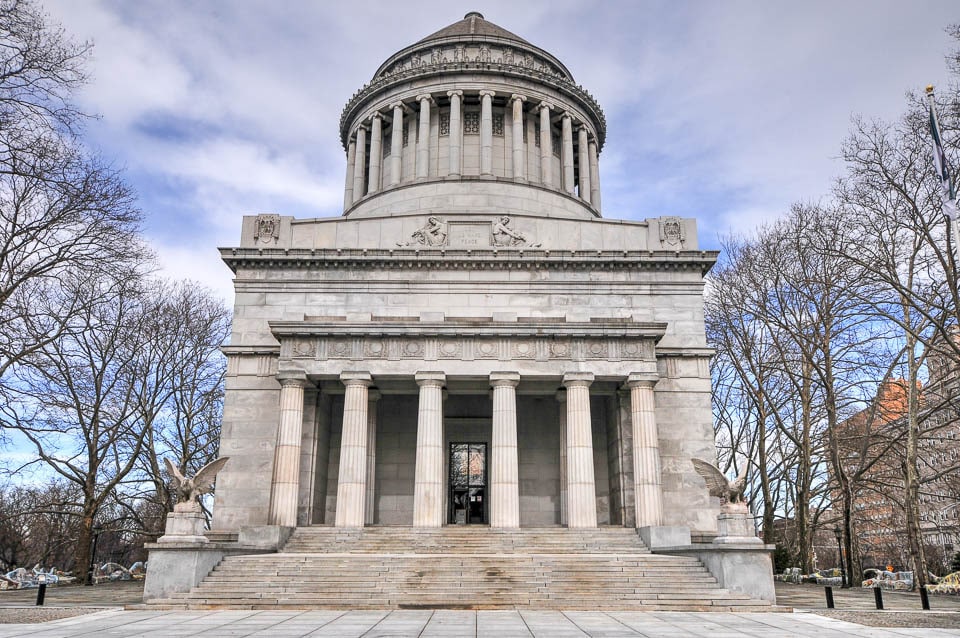
On the upper level of the mausoleum, the drum is surrounded by a circular Ionic colonnade. The columns support an entablature and cornice decorated with bosses and palmettes. The drum’s wall above the colonnade is adorned with pilasters in the form of fasces, a symbol of unity depicted by a bundle of twigs bound by a rope forming an X. Crowning the monument is a stepped cone with a capstone.
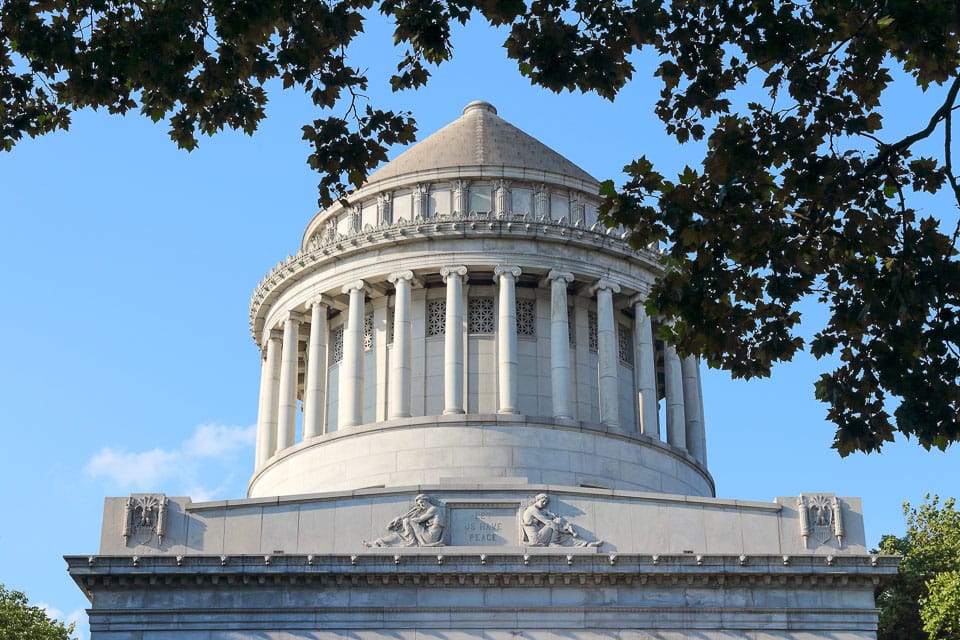
The white marble-clad interior of Grant’s Tomb is shaped like a Greek cross on the main level. There is a dome above the centre and four barrel-vaulted exhibition spaces extending in each cardinal direction.
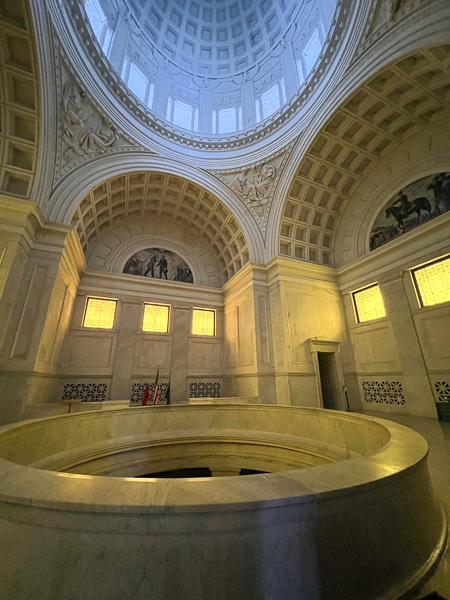
Below the dome, at ground level, is a crypt with two identical red granite sarcophagi containing the bodies of Ulysses and his wife Julia. A balustrade separates the sarcophagi from a corridor that wraps around the crypt. The design of the domed interior, crypt, and sarcophagi emulates Napoleon’s tomb at Les Invalides in Paris.
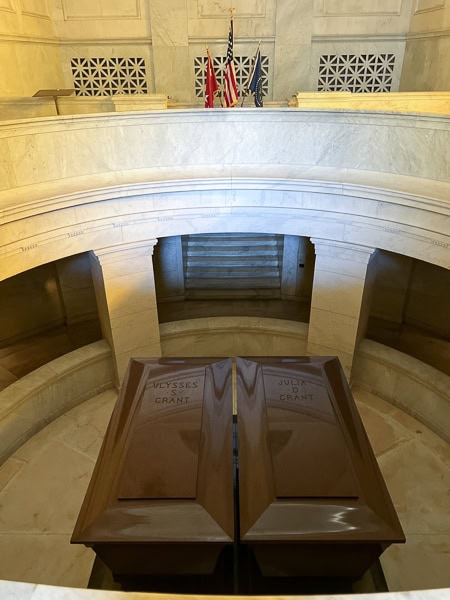
The most stunning feature of Grant’s Tomb is the coffered dome. Measuring 40 ft/12 m across, it is surrounded by a gallery with 12 pilasters topped by eagle sculptures. Each opening between the pilasters has a pair of Ionic columns supporting panels decorated with shields and wreaths. Another artistic touch is the reliefs on the four pendentives at the base of the dome. Each allegorical figure represents an era of Grant’s life- his birth, his time in the military, his time as a politician, and his death.
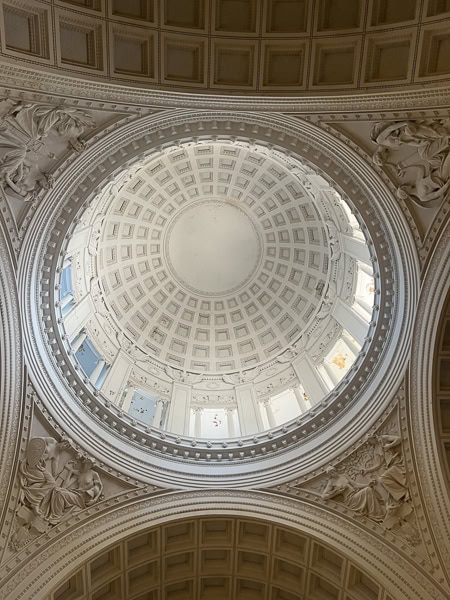
The barrel vaults above each arm of the main floor are also covered with coffered panels. The northern, eastern, and western arms have three square, amber-coloured windows. Above the windows are lunettes with mosaic murals depicting the battles of Vicksburg, Chattanooga, and Appomattox.

To the northwest and northeast of the main room are small, circular reliquary rooms with false domes. The rooms have octagonal display cases with replicas of battle flags and the walls have maps of Civil War battle sites.
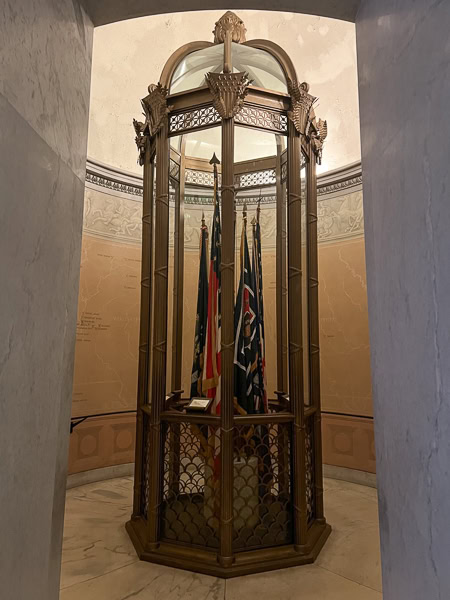
Interesting Facts About Grant’s Tomb
Here are a few more interesting facts about Grant’s Tomb:
- The mausoleum was built smaller than planned, and with less ornamentation, because the Grant Monument Association struggled to raise enough money, reaching only $600,000 of its $1 million goal. The front of the building was supposed to have a pedestal with a statue of Grant on his horse, equestrian statues of Union generals, and a statue of Grant atop the cone.
- The tomb was a popular tourist attraction in its early years, consistently recording 500,000 annual visitors. In 1906, the memorial attracted about 600,000 visitors, which was more than the Statue of Liberty.
- The eagle statues on the front staircase were installed in 1939 after being salvaged from the City Hall Post Office and Courthouse before it was demolished.
- The female figures on either side of the “Let Us Have Peace” plaque on the facade may have been derived from those on the Medici Tombs in Florence, Italy.
- There are almost 70 representations of fasces adorning the mausoleum, conveying the message of strength in unity.
- The flags in the reliquary rooms are replicas of the battle flags brought to the memorial’s dedication ceremony in 1897.
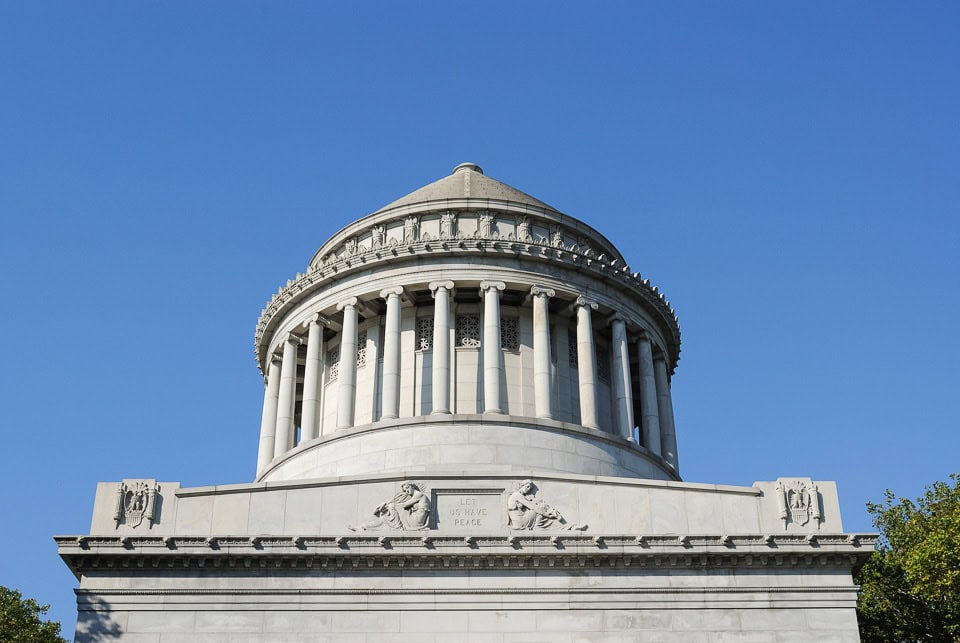
Final Words
Honouring an influential leader, Grant’s Tomb reflects both his military triumphs and political legacy.
Of all the presidential burial sites in the United States, the General Grant National Memorial is the most grand and stately. The mausoleum’s size, Neoclassical architecture, and decorative symbolism are a fitting tribute to a heroic general and president dedicated to civil rights and national unity.
Even though it only takes a few minutes to visit the General Grant National Memorial, it’s worth a stop to admire the dome, pay your respects at the sarcophagus, and reflect on Ulysses Grant’s contributions to the nation.
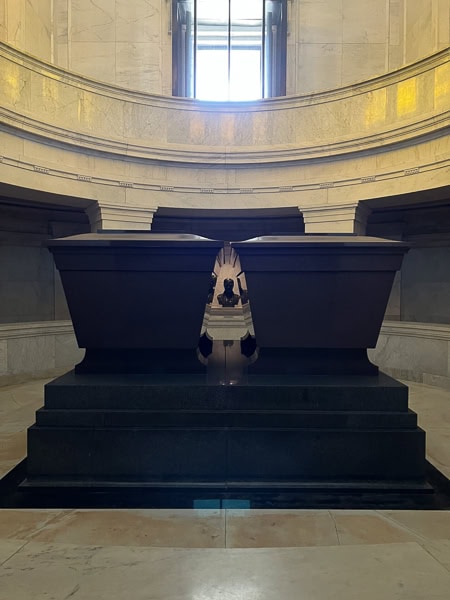
Practical Information for Visiting General Grant National Memorial
Location: The General Grant National Memorial is in Riverside Park in Manhattan, New York City. The address is West 122nd Street and Riverside Drive.
Hours: The mausoleum is open Wednesday- Sunday upon request from 1:00 pm- 4:00 pm (see a park ranger at the visitor center for access). It is closed on Thanksgiving Day, Christmas Day, and New Year’s Day. Confirm current hours here.
Admission Fees: None
Visitor Center: The visitor center across the street west of the mausoleum has an information desk, interpretive exhibits, and a film about Ulysses S. Grant and the mausoleum. There’s also a bookstore/gift shop.
New York City Accommodations
If you’re planning to visit Grant’s tomb and need accommodations, here is a list of hotels in New York City. Please consider booking your New York accommodations through the included link. It costs nothing extra and helps support this website.
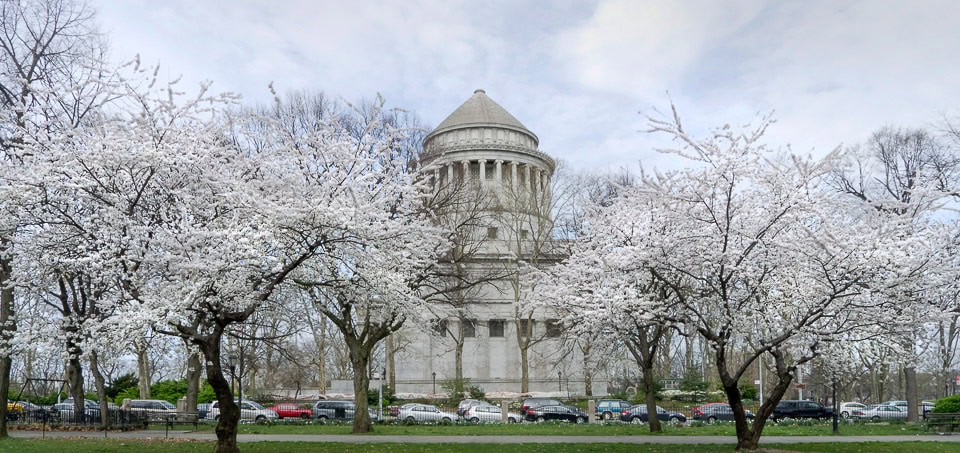
More Burial Places in the United States
- Famous People Buried in New York City- A Guide to the Famous Graves in NYC
- Abraham Lincoln’s Tomb- Guide to Lincoln Tomb State Historic Site
- Tomb of the Unknown Soldier- Arlington National Cemetery
- Arlington National Cemetery Burials- Who is Buried in Arlington National Cemetery
- Granary Burying Ground- Burial Place of Three Founding Fathers of the U.S.A.
